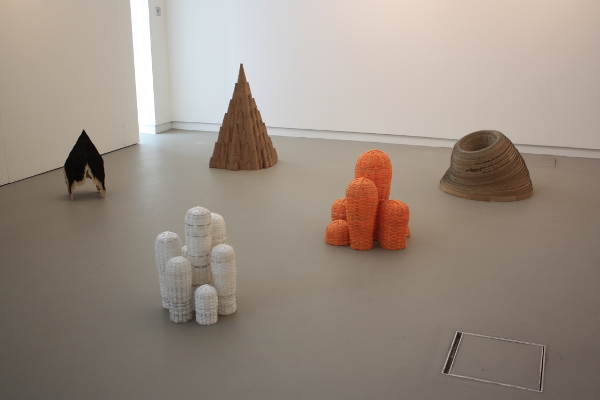
Today I installed some (mostly) older work at the F.E. Mc William Gallery in Banbridge for the show 'Material Worlds' which opens on Friday evening.

Today I installed some (mostly) older work at the F.E. Mc William Gallery in Banbridge for the show 'Material Worlds' which opens on Friday evening.
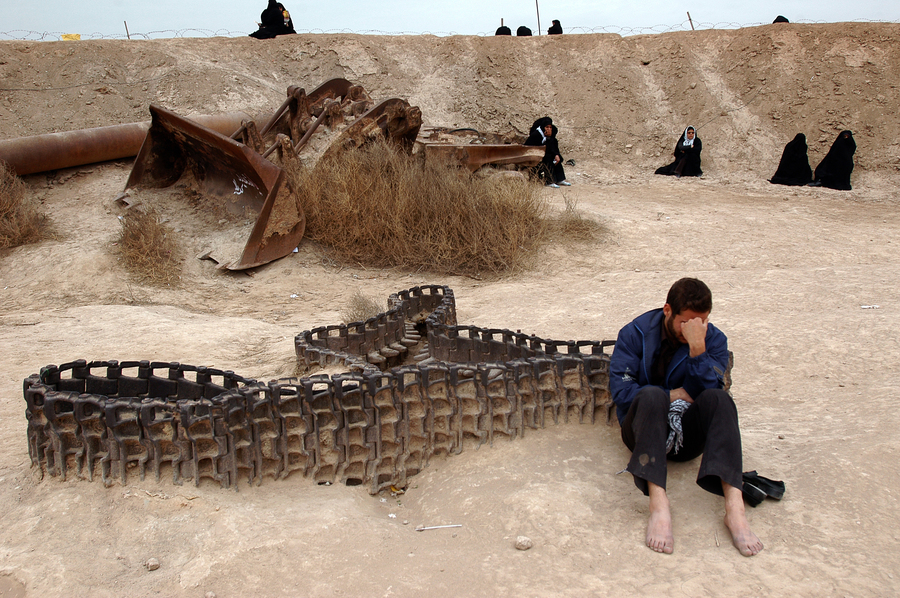
This incredible image is by Abbas Kowsa and comes from his series Shade of Earth: 2007-8 which documents some of the "hundreds of thousands of Iranians visit the fronts of the Iran -Iraq war (1980-1988) during their New Year (Noruz) holiday...
The pilgrims, often family members of those who died, travel with buses from all over the country to visit the places where the fighting was the heaviest. Iran lost over half a million soldiers during the eight year trench war with neighbouring Iraq."
The photograph and another from the series are currently are view at the Gallery of Photography in Dublin in an exhibition of works shortlisted for the Prix Pictet award.
 Here's a video documenting the production of Tania Kovats' artwork Tree made for the Natural History Museum in London.
Here's a video documenting the production of Tania Kovats' artwork Tree made for the Natural History Museum in London.
The artwork is a slice cut from the centre of a real oak tree and was inspired by the work of Charles Darwin.
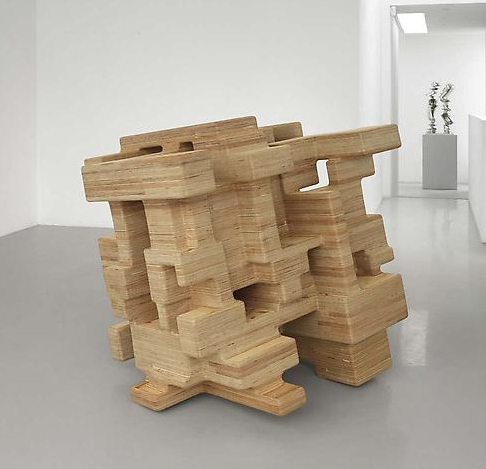 A short video of Tony Cragg talking about his solo show at the Lisson Gallery.
A short video of Tony Cragg talking about his solo show at the Lisson Gallery.
Both of these images were taken by photographer Tom Lawlor in my studio at the Red Stables.
Four Top Coil Pot by Matt Durham
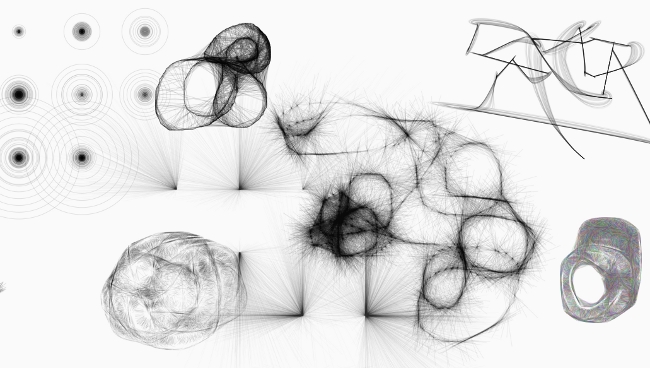 The image shows some of the different effect possible with this fantastic online drawing tool
The image shows some of the different effect possible with this fantastic online drawing tool
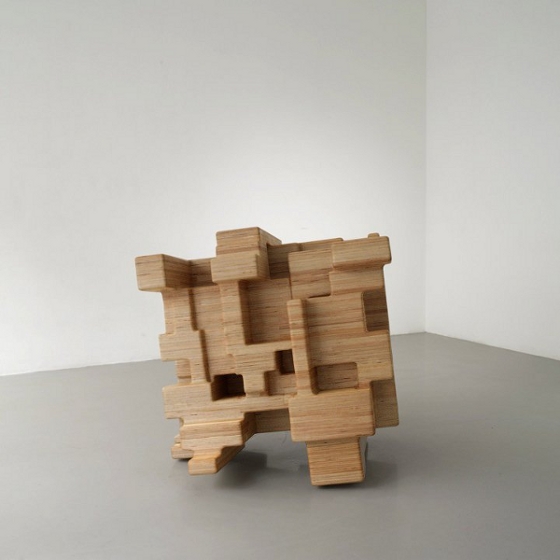 A new Tony Cragg sculpture from his current solo show at the Lisson Gallery. They have no title or media info on the site though it's some sort of wood. Its quite an unusual piece for him. I can't think of any other cube-like forms of his since his early stack pieces from the 70s.
A new Tony Cragg sculpture from his current solo show at the Lisson Gallery. They have no title or media info on the site though it's some sort of wood. Its quite an unusual piece for him. I can't think of any other cube-like forms of his since his early stack pieces from the 70s.
Update: The gallery have added the following info about the piece:
WT (cube), 2008,wood, 123 x 120 x 114cm
Their site also has another image of the work from a different angle.
"A giant ant colony pumped full of cement,and then excavated reveals one of Mother Nature's marvellous wonders.
We've seen what these giant ant mounds look like above ground but this is an incredible view of what the structures looks like underground - which some have called a wonder of the world."
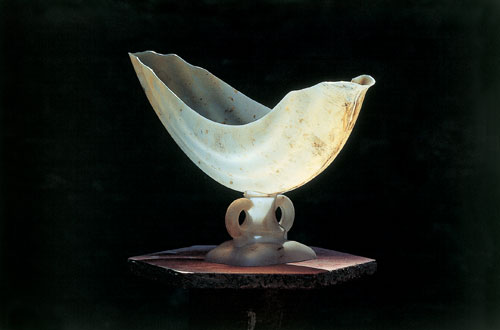
The chemical component in PVC that does not decompose in the consumer society's throw-away goods, as well as a deep fascination with rubbish, led Gerd Rohling to refine things he found on the beach and create precious imitation glasses.
There's a big collection of these currently on show at the Hamburger Bahnhof in Berlin.
 From the cover of the catalogue for a show in Ikon Gallery, Brimingham in 2007.
From the cover of the catalogue for a show in Ikon Gallery, Brimingham in 2007.
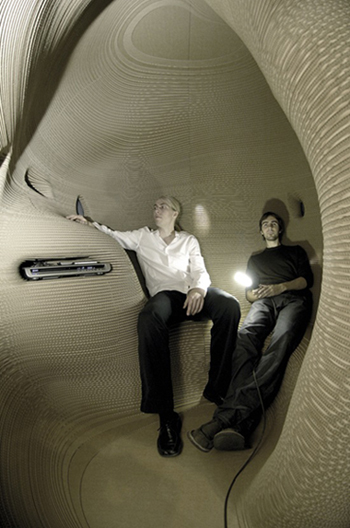
Mafoombey is a cardboard space for listening to music designed by Martti Kalliala & Esa Ruskeepää.
"The structure consists of 720 hand-cut pieces of cardboard sliced horizontally, then stacked on top of each other with no adhesive. It was designed using 3D modelling and scale models with the help of architect friend Martin Lukasczyk. The space includes a sitting area for two to three people and a DVD player to play music. Energy-saving lights and surround-sound speakers are built into the 360-layered structure, with one central wire leading out to plug in for electricity.
The cardboard was donated to the students from Finnish paper manufacturer Stora Enso, in whose factory the students cut the pieces with a controlled knife cutter one-by-one. The design won the competition and was built, becoming the first built project for the 26-year old architects."
More info and pictures here

There is an Irish company called Mcor Technologies who have developed a machine for 3d printing using layers of ordinary paper and PVA glue. The Models shown here were created entirely by the machine. Below is a video from the late late show.

Jockum Nordstrum, House-Recording, cardboard, 2006

Jockum Nordstrum, The Hospital, cardboard, 2006
More at David Zwirner
 There is an article in today's Irish Times by Willie White, the director of the Project Arts Centre. He writes about the current difficulties facing arts organisations since funding decisions were announced at the beginning of the month. He also expresses concern over funding cuts targeting younger artists and the general slowness of the Arts Council in making funding decisions. below are some excerpts:
There is an article in today's Irish Times by Willie White, the director of the Project Arts Centre. He writes about the current difficulties facing arts organisations since funding decisions were announced at the beginning of the month. He also expresses concern over funding cuts targeting younger artists and the general slowness of the Arts Council in making funding decisions. below are some excerpts:
"Even those with only a passing interest will have noticed this week some complaint and consternation around the Arts Council’s cuts to clients. The cuts were, in many cases, greater than its own cut in the December budget and some longstanding clients have had their funding halved or taken away completely.
The talk now is mostly of unjust treatment of existing clients who are experienced artists, but the understandable protests and letters to the editor threaten to obscure what is, in my opinion, another pressing issue. A generation of new artists has long felt overlooked for funding and the boldness of the Arts Council’s actions has so far not translated into a remedy for this. The council says it has earmarked 20 per cent of funding for one-off projects and awards. There is no chance this money will be available to artists until after project grants announced just this week have been processed, most likely in the summer. This is late in the day to plan activities for 2010. For most of the year the public will see less art and not much of it will be made by people under 35.
Artists who have had regular funding withdrawn have been encouraged to apply for other awards and face at least a nine-month hiatus since making initial applications in September 2009, before they know if they can move forward."
"Unfortunately the Arts Council’s current way of doing business seems unnecessarily slow and not very smart. The reason for the tardiness of the council’s process can’t simply be a consequence of December’s budget. It was two months after the budget, and five months after applications closed, that the recent decisions were communicated and at that the work is only half done. Apart from the nuisance for some lucky clients, having to start planning in earnest for 2010 in the second month of the year, independent artists, those who work outside a company structure, have once again to wait even longer for news of possible funding. It is hard to reconcile this with a commitment to supporting artists to make work and to enabling more people to experience the arts in 2010."
 The Nerve - Music and the Human Experience is a six part radio series. The first episode, which dealt with how we perceive music, was played as the lyric feature last Saturday evening.
The Nerve - Music and the Human Experience is a six part radio series. The first episode, which dealt with how we perceive music, was played as the lyric feature last Saturday evening.
All of the episodes except the fifth be listened to here (not sure why the fifth isn't available).
The titles of the episodes are below.
Episode 1: Wired for Sound (Music & the Brain)
Episode 2: In the Key of DNA (Music & Evolution)
Episode 3: The Pipe, the Drum and the Thunder Run (Music & War)
Episode 4: Enchanted, Entranced (Music & Spirituality)
Episode 5: myTunes (Music & Identity)
Episode 6: Sentimental Journey (Music & Emotion)
Still images from the piece are featured in the focus section of the Paper Online Visual Art Journal
Video documenting the installation:
 "The researchers decided to task the slime mold with a problem human designers had already tackled. They placed oat flakes (a slime mold favorite) on agar plates in a pattern that mimicked the locations of cities around Tokyo and impregnated the plates with P. polycephalum at the point representing Tokyo itself. They then watched the slime mold grow for 26 hours, creating tendrils that interconnected the food supplies. Different plates exhibited a range of solutions, but the visual similarity to the Tokyo rail system was striking in many of them"
"The researchers decided to task the slime mold with a problem human designers had already tackled. They placed oat flakes (a slime mold favorite) on agar plates in a pattern that mimicked the locations of cities around Tokyo and impregnated the plates with P. polycephalum at the point representing Tokyo itself. They then watched the slime mold grow for 26 hours, creating tendrils that interconnected the food supplies. Different plates exhibited a range of solutions, but the visual similarity to the Tokyo rail system was striking in many of them"